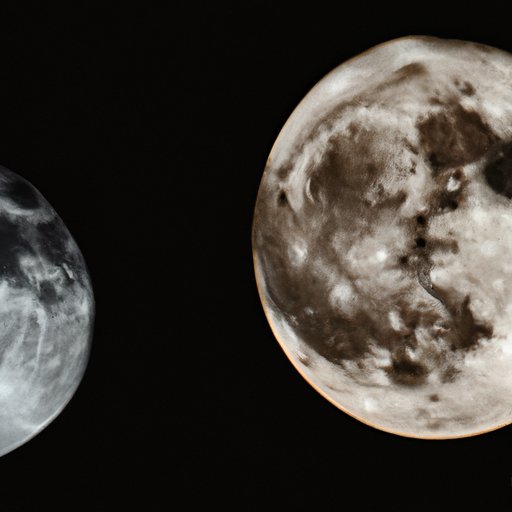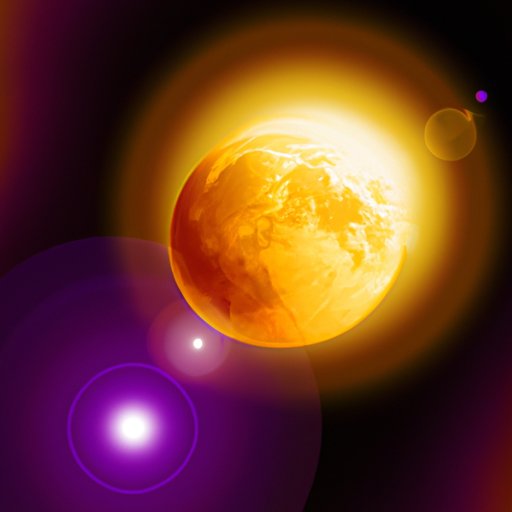Introduction
Lunar illumination is the process by which the moon is lit up, either naturally or artificially. It has been a source of fascination for centuries. In this article, we will explore the physics behind lunar illumination and how it works. We will look at how solar rays reach the moon, the reflection of these rays on the moon’s surface, and the phases of the moon and how they affect its brightness. Finally, we will compare the light from the moon to that of other celestial bodies.

Exploring the Physics Behind Lunar Illumination
Let us begin by examining the role of the sun in lighting up the moon.
How Solar Rays Reach the Moon
Solar rays are the primary source of light for the moon. The sun emits a vast amount of energy in the form of radiation, which travels through space and eventually reaches the moon. This radiation is absorbed by the moon’s surface, which then reflects some of it back into space. This reflected light is what we see when we look at the moon.
The Reflection of Solar Rays on the Moon’s Surface
When solar rays hit the moon’s surface, they are scattered in all directions. Some of this light is reflected back into space, while some is absorbed by the moon’s surface. The amount of light that is reflected depends on the angle of incidence, which is the angle at which the light hits the moon’s surface. When the angle is low, more light is reflected, making the moon appear brighter. When the angle is high, less light is reflected, making the moon appear darker.
Understanding the Moon’s Phases and How They Affect Its Brightness
The moon goes through different phases throughout its orbit around the earth. These phases have an effect on the amount of light that is reflected from the moon’s surface, and thus on its brightness. Let us take a closer look at these phases and how they affect the moon’s brightness.
Waning and Waxing
The first two phases are waning and waxing. During the waning phase, the moon’s illuminated area decreases, making it appear darker. During the waxing phase, the moon’s illuminated area increases, making it appear brighter. As the moon moves through its orbit, it goes through these two phases repeatedly.
Eclipses
The third phase is an eclipse. An eclipse occurs when the earth passes between the sun and the moon, blocking out the sun’s light. During a total eclipse, the moon is completely dark, while during a partial eclipse, the moon appears dimmer than usual. Eclipses can last for up to several hours.
Comparing the Light from the Moon to Other Celestial Bodies
Now that we have explored the physics behind lunar illumination, let us compare the light from the moon to that of other celestial bodies.
Stars
Stars are much brighter than the moon. This is because they are composed of extremely hot gas, which emits a huge amount of energy in the form of light and heat. Stars are so bright that they can be seen even during the day.
Planets
Planets are much dimmer than stars, but still brighter than the moon. This is because they reflect some of the sunlight that hits them, but not as much as stars do. Planets are usually visible at night, but not during the day.
Galaxies
Galaxies are even dimmer than planets. This is because they are composed of billions of stars, which emit only a small fraction of the energy that a single star does. Galaxies are usually only visible with the help of a telescope.
Conclusion
In conclusion, lunar illumination is the process by which the moon is lit up. We have explored the physics behind this process, including how solar rays reach the moon, the reflection of these rays on the moon’s surface, and the phases of the moon and how they affect its brightness. We have also compared the light from the moon to that of other celestial bodies. We hope that this article has given you a better understanding of how the moon gets its light.
(Note: Is this article not meeting your expectations? Do you have knowledge or insights to share? Unlock new opportunities and expand your reach by joining our authors team. Click Registration to join us and share your expertise with our readers.)
